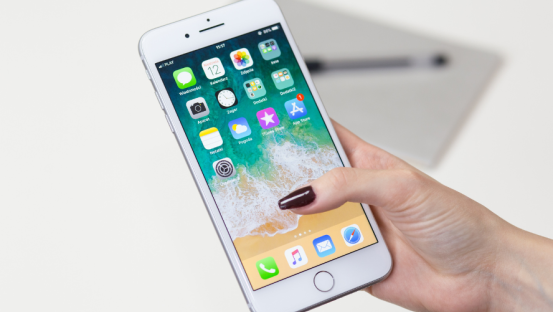Mastering video presenting and conferencing: Be tech-savvy

As we adapt to having more meetings, conferences, workshops, and events online, speakers who are tech-savvy have had a leg up in adopting new technology and practices quickly, but the good news for the rest of us is there are things you can do to instantly level-up your tech-savviness.
Interruptions happen.
Tech sometimes fails.
However, how you deal with issues when they come up can be the difference between your video presentation or conference failing or succeeding; the audience-members engaging with you and your content or checking out (either mentally or by closing the app); or you being hired to come back, or not.
A week or so ago, SpeakerHub hosted a webinar on how to make your profile stand out.
For the webinar, our host and SpeakerHub CEO, Andras Baneth, planned on going through a handful of profiles piece by piece, by sharing his screen and scrolling through the various sections providing insights on how they could improve certain elements.
Things were going smoothly; the audience was there and waiting without a hitch, and the intro was informative and correctly set the tone.
However, when Andras tried to share his screen, there was a hitch—all the audience could see was the spinning wheel of death.
After trying to share once or twice, Andras quickly changed tack.
Instead of waiting a second longer for the screen share to function, or worse—cancelling the webinar as this was the major component of the session, he simply redirected the audience to the profile being reviewed by adding the link into the chat box so they could open the profile on their browser.
It was not the ideal situation, but the webinar was able to continue swiftly without missing too much of a beat.
But imagine if Andras had simply felt stuck.
Imagine if he didn’t have a backup plan.
He could have spent an additional 15 minutes flip-flopping around then cancelling the whole session, which would have left the audience with a negative impression.
Yes, interruptions and failures happen, but a skilled presenter knows how to both set themselves up for success and navigate when things go wrong.
Today, we want to explore how you can prepare your technology before your session, and how to set up backup plans in case something fails.
1. The internet: great communication needs a great connection
You cannot give a stunning performance with unreliable internet. If your audio cuts out, your screen is frozen, or the call gets dropped, you will inevitably lose your flow, and worse, the audience might lose essential information.
So to start, we want to talk about your internet connection, because all the best quality cameras, lights, microphones, and backup plans won’t make a difference if you cannot connect.
You will need two things for a great connection:
A. High-speed internet
Most conventional internet plans offer faster download speeds than upload speeds. This is great for casual internet use, such as content consumption and downloading media, however it’s not ideal for video conferencing where you will need a fast upload speed.
The table below offers some guidance on the minimum requirements and optimum download and upload speeds depending on what kind of video call you are planning.

If you type “internet speed test” into Google, you can run a reliable speed test that will give you an estimate of how fast your upload and download speeds are.
If your connection is too slow, it can be worthwhile to contact your Internet Service Provider. Find out what you are paying for, what your options are, and what you can do to improve your connection if it is not strong enough.
If you are sharing your connection with multiple people, this may affect your speed, and it might be worthwhile to consider getting a dedicated connection so you can ensure your connection is flawless.
B. A fast computer processor
Your processor is the brain of your computer—if there is too much going on, or if it is simply too old, dull, and tired, your audio and video quality will suffer.
For video conferencing, your computer should have a minimum 2 GB of RAM and ideally a quad-core processor.
How do you know how fast your processor is?
-
Windows: Launch Task Manager (Ctrl+Shift+Esc). Click “Performance”. Check the clock speed displayed under “Base speed”.
-
Apple: Click the Apple icon in the top left corner of your Mac. This will bring up a drop-down menu. Pick the top option: About This Mac. This window should display your processor speed, memory, and graphics card information.
If your computer is on the slow side, be sure to quit all applications you are not currently using before making your call, so that your computer can focus all its processing power on your call. If this doesn’t help, you may need to consider upgrading.
3 tips for improving your connection:
-
If possible, connect your device through an ethernet cable rather than use wi-fi. A cable connection will give you more stability.
-
Keep your internet connection and CPU processing power dedicated to your presentation.
This means quitting all applications, pausing or cancelling any updates, downloads, or uploads.
Consider getting a dedicated internet connection if you are sharing with people and it is affecting your speed.
-
For the best wi-fi signal, place your router high off the ground, close to your workspace and away from any clutter or appliances.
Remember, before you start investing in more or better video conferencing equipment, such as the webcams, microphones, headphones and lighting we will explore in the next section, they will not work properly if you don’t have the basics: a great internet connection and enough processing power.

2. The tools
There are literally thousands of tools to choose from, and finding the right ones will require that you know what budget is feasible and what you actually need.
The guide below will give you some ideas and product suggestions to get you started.
For optimal video presenting, you will need:
1. Headphones
2. Lighting
3. High-resolution webcam
4. Microphone
Instead of leaning on anecdotal suggestions for this article, we want to share the professional expertise from Nick Gardner, an experienced video producer. We will explore the above four categories, with a few suggestions for each tool.
A. Headphones or earbuds
One of the biggest video calling mistakes is to not wear headphones. Instead, people use their device’s built-in speaker and microphone, which often leads to feedback in the call. Feedback is like an electronic echo and is very distracting. Essentially what is happening is there is an audio loop where the speaker’s voice gets picked up by laptop/computer microphone and added back into the call, creating an echo.
The easiest way to solve this is to grab a set of headphones or earbuds. Luckily, for this tool you do not need anything fancy or high-cost. You can use the headphones you normally use for listening to music or making calls. If you are working in a noisy area, you should consider getting a pair of noise-cancelling headphones, which can help you stay focused and present.
B. Lighting
Spending $500 on a webcam won’t matter if your audience cannot see you on screen because of poor lighting.
You want to shine on stage, even if your stage is your home office. And just like on a stage at a conference, good lighting is essential.
5 ideas on how to improve your lighting.
-
The light source should be directly on your face, coming from in front of you. Avoid overhead lighting or being backlit (where the light comes from behind you, such as sitting in front of a window). Overhead lighting has a tendency to throw harsh shadows on your face, which can be hard to overcome even with additional lighting, and being backlit will cause a silhouette, making it very difficult to see you.
-
Try not to mix light sources: Natural light is ideal, but if the light does not fully illuminate your face, or there is a chance the light will change throughout your session, then you are better off using a lamp.
-
Avoid venetian blinds, especially if they are behind you or are casting a shadow. The light that gets through the slats will wreak havoc on most camera’s automatic light adjustments. It is better to use blackout shades or curtains.
-
If you are working on a smaller budget, make use of desk lamps. This is an easy and economical solution, but be aware that such lighting can be strong and direct, which could brighten your face too much. To counter this, you could try bouncing the lamp light off a nearby wall rather than pointing it straight at your face, or tape some diffusion material (a white or cream mostly transparent fabric) over your lamp. But if you are going to spend some money on this, you may be better off buying dedicated lighting for video conferencing.
-
Ring lights work perfectly for video conferencing. Look for one that comes with a stand, that is small enough that you can set your webcam directly behind it, shooting through the center of the ring. Make your face stand out with optimal clarity by dimming other lights in the room.
C. High-resolution webcam
For video conferencing you want a camera that has a minimum of a 1280x720 resolution (720p).
While most computers and laptops have a webcam built in, the problem with using them is that they can be difficult to position effectively. Upgrading to a higher quality external USB webcam will not only offer a better image, it will give you flexibility when positioning it.
For video conferencing, you want a camera that has a minimum of a 720 resolution (720p). Optimally, you are looking for a camera capable of 1080p. Low resolution means less detail and lower quality, which is fine if your audience will be viewing you on low-res screens, but if any will be watching you on high-res screens, you will want to use a higher-resolution camera.
Nick offers some suggestions for the best webcams at three different price points:
Razer Kiyo webcam with built-In light: $87 (if budget permits, I recommend purchasing separate lights. However, this budget-friendly option kills two birds with one stone.)
Logitech C920S Pro: $70
Logitech C922: $100
D. Microphone
While most webcams and laptops have a microphone built right in, the quality usually leaves much to be desired. Poor, muffled audio that undulates in volume as you move around is distracting and pulls attention away from your audience's ability to follow and focus on your message.
Some pro speakers opt to spend thousands on professional recording grade microphones, the majority of which have been built for recording music. While these can deliver top quality sound, you will often be paying for technology that is more advanced than necessary to deliver stunningly clear and crisp audio.
For more on which specific microphone to choose, jump over to this article on “The 15 Best Web Microphones for Webinar Hosting”
When using the microphone, be sure to place it a good 6 inches/15cm from your mouth. This is a comfortable distance that will pick up appropriate sound. Closer, and it will pick up undesirable sounds like smacking lips and swallowing, but placing it too far away will make it challenging to get crisp sounds.
If you find that there is still an echoey sound in the recording, check your room. If the room itself is causing the echo, use furnishings and fabrics to soften, absorb, and cancel unwanted sound.
Rugs, carpets, pillows and curtains should soften the sound sufficiently, without you needing to resort to using dedicated acoustic panelling in your workspace.
3. Pre-event testing

“By failing to prepare, you are preparing to fail.”
-Benjamin Franklin
A lot of things have to be in working order to deliver a talk seamlessly. Why leave this up to chance? Why risk road bumps and hurdles?
A little pre-event preparation can help smooth out any potential wrinkles and leave you confident that you will be able to provide a first-rate experience for your audience.
Below, we will explore the three main things to test before your event: the presentation and platform, your equipment, and the internet connection.
A. Platform and presentation
Any surprises or hiccups could throw your presentation off. A video that won’t play, or three unneeded slides you forgot to take out of the slide deck could make you seem unprofessional or leave you scrambling to sort out an alternative solution.
Make sure that:
-
you know how to use the webinar or conferencing platform and that you are ready and signed in (no searching for passwords ten minutes before start time).
-
your presentation is uploaded, and all the links, screen sharing functions, and transitions work seamlessly.
-
you know how to use the chat box, and have a plan for how you will manage any questions that come in. You can even ask someone to test signing in and making sure that all the functions for the audience work as well, or if any special instructions will need to be given.
Essentially, you want to run through all the elements of the presentation so you know that everything is in working order before the presentation starts. Don’t leave things to chance—doing this run through will take a few minutes of your time, but will leave you with more peace of mind.
B. Equipment
Test all your gear and do a dry run well before the presentation start time. Set up and plug in all your equipment and make sure everything looks and sounds right.
While technical issues will come up from time to time, you can reduce the risk of unwanted surprises by taking the time to test your gear before the session.
Ensure that your equipment is synced with your web conferencing application.
Sometimes there can be hiccups in granting audio access or webcam permissions, such as the requirement to restart your device—the last thing you want is to have to restart, get signed out, and be scrambling to sign back in again while your audience sits and waits. Do a dry run and make sure everything is working well before the start.
Pro-tip: have backup equipment ready and nearby.
A microphone that suddenly stops picking up audio, or an internet router that has inexplicably stopped working could be disastrous for your presentation, so plan ahead.
Make a list of all the essential elements required for backup. Some examples; a back up device with the platform already downloaded and ready to run, an alternative internet option like a hot-spot, a second pair of headphones.
C. Test your internet connection before the presentation
As we mentioned at the beginning of this article, a powerful internet connection is essential. You will likely have tested your connection before the day of the conference, but before the event start time, check it again and make sure it is running at optimal speed.
While your connection may seem fine for web browsing, you want to be sure that it is powerful enough to host a professional video call.
Before your presentation, shut down all applications across all your devices that could be using data. Then head to Speedtest or similar, to see how fast your computer can transfer data across the wider Internet.
If Speedtest shows that your connection isn’t fast enough, try some of the following fixes:
-
Move your router closer to your device.
-
Turn off any unnecessary devices that could be using your bandwidth.
-
Most modern routers have two frequencing, 2.4 GHz and 5 GHz. Run speed tests on both and see which one is faster. (the 5 GHz channel is often faster but has a shorter range; 2.4 GHz generally offers better reception over longer distances, but it is worthwhile to try both).
-
If you still cannot get a fast connection, use an ethernet cable instead of wi-fi to connect to your router.
Additionally, have a secondary option ready to go in the event that your internet goes down.
Set a hotspot up on your phone, or on a neighbouring wi-fi network that you can use in the event that yours stops working.
Even if the connection is poor, it is better to finish the presentation with a poor connection than to disappear completely, leaving the event organizer having to scramble to text you, figure out what is happening, and tell the audience.
Sometimes tech fails. Having a plan B shows that you are professional, and will help you avoid scrambling and floundering when problems come up.
Wrapping it up
Being a pro speaker on screen requires some know-how, including having the right tools in place and knowing what to do when something goes wrong.
We are all adjusting and learning how to work in a new way, but if you want to distinguish yourself from the crowd of speakers who are all adapting to moving their speaking business online, having some tech savviness can work in your favor.
Learn how to use your tools well. Be sure you know how to use the platform and that your presentation looks great. Test your connection and equipment before each talk, and make sure all the elements are in-place and ready to help you deliver a great talk.
Share this article by clicking one of the social media buttons below.







